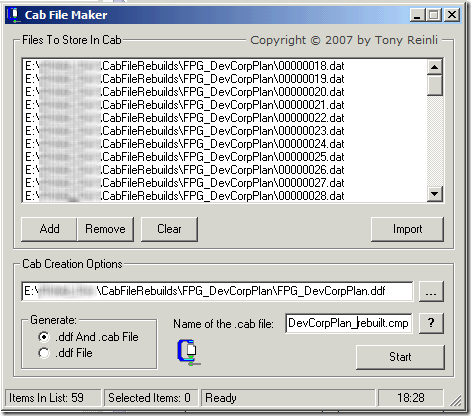
Installshield Cab File Viewer 140
Jimmd69 17:58 Unripe starkers pictures erotic fanfiction free adult game erotic wallpapers erotic spa erotical night http://busty.net.erolove.in/?dasia. Shutochnaya biografiya yubilyara.
InstallShield Cabinet and Log File Viewer Use the InstallShield Cabinet and Log File Viewer to do the following: View an InstallScript cabinet file (.cab) or InstallScript header file (.hdr), as well as their compressed files, registry entries, components, features, and other data. This tool also lets you extract files from the.cab file. This functionality applies to InstallScript and InstallScript Object projects. View InstallScript log files (.ilg) that are created by InstallScript installations. This tool enables you to see what your installation has recorded in the log file, which contains important uninstallation information in a binary format.
View an InstallScript cabinet file (.cab) or InstallScript header file (.hdr), as well as their compressed files, registry entries, components, features, and other data.
This functionality applies to the following project types: InstallScript and InstallScript MSI. Download Site: Sharecode: /d/98292949 Tested on Win7 x32 Required visual c++ 2012 (added x32 files) Edited May 20, 2014 by Vestor.
View and Read SQL Server Setup Log Files • • 4 minutes to read • Contributors • • • • • • In this article APPLIES TO: SQL Server (Windows only) Azure SQL Database Azure SQL Data Warehouse Parallel Data Warehouse SQL Server Setup creates log files in a dated and time-stamped folder within%programfiles% Microsoft SQL Server nnn Setup Bootstrap Log by default, where nnn are numbers that correspond to the version of SQL that's being installed. The time-stamped log folder name format is YYYYMMDD_hhmmss. When Setup is executed in unattended mode, the logs are created within%temp% sqlsetup*.log. All files in the log folder are archived into the Log*.cab file in their respective log folder. Note The numbers in the path nnn correspond to the version of SQL being installed. In the above picture, SQL 2017 was installed, so the folder is 140. For SQL 2016, the folder would be 130, and for SQL 2014 the folder would be 120.
SQL server setup completes three basic phases: • Global Rules verification: validates basic system requirements • Component update: checks to see if there are any updates available for the media being installed • User-requested action: allows the user to select and customize features This workflow produces a single summary log, and either a single detail log for a base SQL Server installation, or two detail logs for when update, such as a service pack, is installed along with the base installation. Additionally, there are datastore files that contain a snapshot of the state of all the configuration objects that are being tracked by the setup process, and are useful for troubleshooting configuration errors. XML dump files are created for each execution phase and are saved in the Datastore log subfolder under the time-stamped log folder. The following sections describe SQL Server Setup log files. Summary.txt file Overview This file shows the SQL Server components that were detected during Setup, the operating system environment, command-line parameter values if they are specified, and the overall status of each MSI/MSP that was executed.
The log is organized into the following sections: • An overall summary of the execution • Properties and the configuration of the computer where SQL Server Setup was run • SQL Server product features previously installed on the computer • Description of the installation version and installation package properties • Runtime input settings that are provided during install • Location of the configuration file • Details of the execution results • Global rules • Rules specific to the installation scenario • Failed rules • Location of the rules report file. Note Note that when patching there can be a number of sub folders (one for each instance being patched, and one for shared features) which contain a similiar set of files (i.e.%programfiles% MicrosoftSQL Server 130 Setup Bootstrap Log MSSQLSERVER). Location The summary.txt is located within%programfiles% MicrosoftSQL Server nnn Setup Bootstrap Log. To find errors in the summary text file, search the file by using the 'error' or 'failed' keywords. Summary__YYYYMMDD_HHMMss.txt file Overview The summary_engine base file is similar to the summary file and is generated during the main workflow. Location The Summary__YYYYMMDD_HHMMss.txt file is located at%programfiles% MicrosoftSQL Server nnn Setup Bootstrap Log.
Macro PUBG - FullAuto Recoil Macro - For all server and all mouses - Macro/script for Playerunknown's Battlegrounds - Paypal payment. Apb reloaded makros.